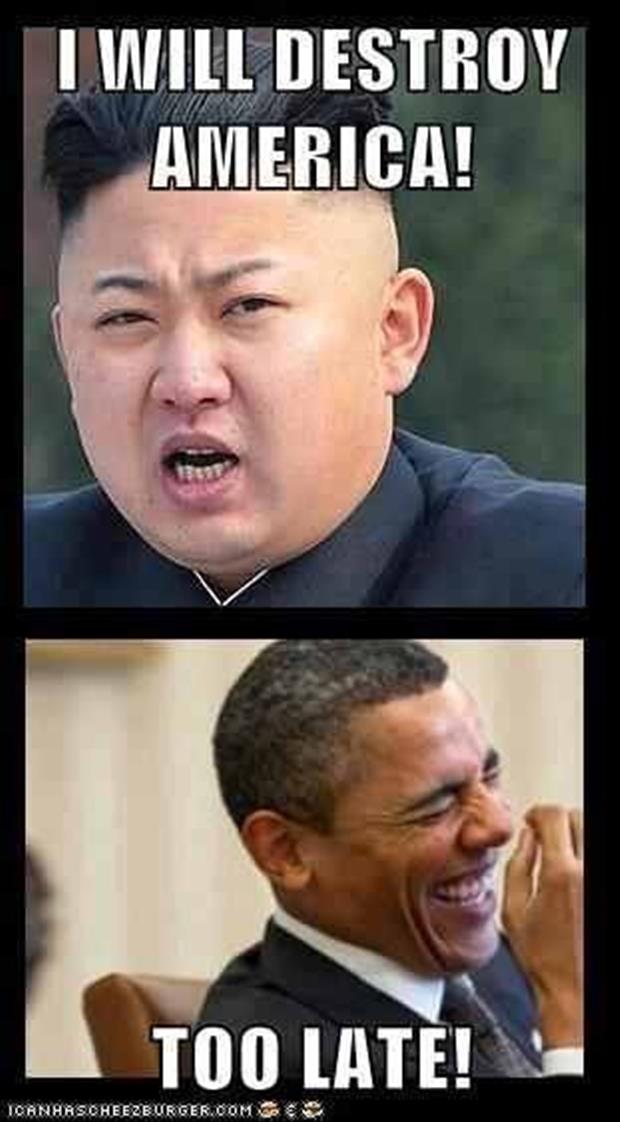
Really? Do we really need this shit now? For Christ sakes, can’t they wait until our 14 other crisises are semi-resolved? I’m starting to get really annoyed with these Fourth Turnings. They never let up.
North, South Korea Trade Artillery Salvos
North Korea and South Korea traded artillery fire near the countries’ disputed sea border that was the scene of a deadly shelling in November.
North Korea fired a second round into the waters near Yeonpyeong Island yesterday after three South Korean shells were fired into the sea around 2 p.m. local time, Yonhap news reported. Residents of the island heard the salvos, Yonhap’s Korean language service said.
South Korea was responding to an initial salvo from the North an hour earlier, said a defense ministry official who declined to be identified, citing government policy. The defense official said the military wasn’t aware of any drills in the area.
The incident came a month after both nations said they would try to revive multilateral talks on the North’s nuclear- weapons program, signaling an easing of tension between the two rivals that has been an irritant to U.S.-China ties over the past year. The so-called Northern Limit Line dividing the two nations on their western border in the Yellow Sea has been a source of repeated conflict since the 1950-1953 civil war ended in a cease-fire.
“North Korea appears to be provoking the South in a calculated manner to highlight the need for a peace treaty to replace the armistice agreement after the war,” said Kim Yong Hyun, a professor at Dongguk University in Seoul. “I doubt the North will go so far as to risk breaking down the dialogue.”
Four South Koreans died in November when the North shelled Yeonpyeong island in retaliation for South Korea firing rounds into the disputed waters during a training exercise. Relations soured earlier in the year over the sinking of a South Korean warship in March, killing 46 sailors.
Trade, Aid
The two incidents spurred the U.S. to put pressure on China, North Korea’s main source of trade and financial aid, to rein in Kim Jong Il’s government. China accounted for 83 percent of North Korea’s $4.2 billion of international commerce in 2010, the Korea Trade-Investment Promotion Agency said in May. China made up 79 percent of trade in 2009 and 53 percent in 2005, according to the Seoul-based organization.
The cost of credit-default swaps insuring South Korean government debt from default rose four basis points after the reports of the shelling to 129.5 basis points as of 4:50 p.m. in Singapore, according to Royal Bank of Scotland Group Plc prices. One month non-deliverable won forwards touched 1,086 won per dollar from 1,082.5 after the report, before stabilizing within an hour, said Joo Hyung Park, a currency dealer at Korea Exchange Bank. (004940)
Improving Ties
The shelling “could make a small dent on sentiment,” said Chang In Whan, president of Seoul-based KTB Asset Management Co., which oversees the equivalent of $7.6 billion. “I’m not too worried because the timing wasn’t that sensitive. Tensions over North Korea have been easing recently.”
South Korea’s chief nuclear envoy, Wi Sung Lac, said on July 22 that his two-hour discussion with his North Korean counterpart, Ri Yong Ho, at a regional security forum on the Indonesian island of Bali was “very constructive.” The U.S. then invited North Korean officials to New York for further negotiations.
The six-party talks involving the two Koreas, the U.S., China, Russia and Japan have been stalled since 2008.
South Korea has been closely monitoring the North Korean military near the western border since the November attack and there was nothing to suggest that drills were being carried out, the defense official said. The South’s military alert level hasn’t been raised, he said.
Maritime Border
The maritime border between the two countries snakes around the Ongjin peninsula, creating a buffer for five island groups that South Korea kept under the armistice. That agreement doesn’t mention a sea border, which isn’t on United Nations maps drawn up at the time. North Korea says it doesn’t recognize the border, which hems in its ships and excludes it from fertile crabbing and fishing grounds.
The three-nautical-mile (3.5-statute-mile) territorial limit used to devise the line was standard then. Today almost all countries, including both Koreas, use a 12-mile rule, and the islands are within 12 miles of the North Korean mainland. The farthest is about 100 miles (160 kilometers) from the closest major South Korean port at Incheon.
The JoongAng Ilbo newspaper reported yesterday that North Korean spies with orders to assassinate South Korean Defense Minister Kim Kwan Jin have entered the country. South Korean and U.S. intelligence officials are working to find them, the report said, citing unidentified South Korean officials.
Kim said after the November artillery bombardment by the North that in the event of further attacks his country would “mobilize all combat capabilities available to severely punish the enemy,” including airstrikes.





